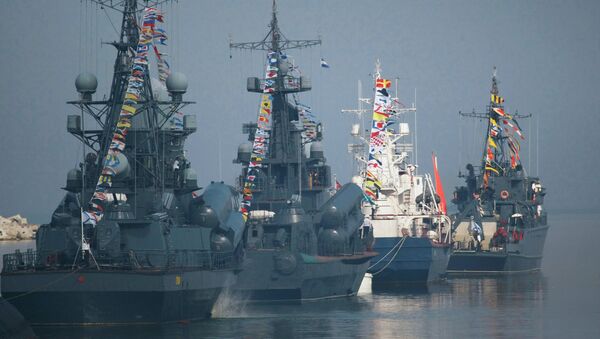The creation of the regular Russian Navy dates back to the reign of Peter the Great. During the Second Azov Campaign against Turkey in 1696, Russia used 2 warships, 4 fireships, 23 galleys and 1,300 longboats built at river shipyard in Voronezh. After the seizure of the Azov fortress the Boyar Duma issued a decree on commencing the construction of the navy on October 20, 1696.
This date is considered the official birthday of the regular Russian Navy.
In keeping with President Vladimir Putin’s decree, Navy Day is annually marked in Russia on July 31.
On Sunday, the Mariinsky Theater’s symphony orchestra, led by Valery Gergiev, performed a concert of music by Tchaikovsky, Glinka, Shostakovich and Mussorgsky on board the guided missile cruiser Vrayag in Vladivostok as part of the nationwide celebrations.
The sailors and guests also enjoyed performances by world-acclaimed Japanese violinist Akiko Suwanai.
The Navy took an active part in Russia’s antiterrorist operation in Syria, led by the Moskva missile-carrying cruiser and the Caspian Flotilla.
On October 7 and then on November 20 of last year, warships of the Caspian Flotilla fired salvos of Kalibr cruise missiles from the Caspian Sea and successfully hit targets from a distance of 2,500 km.
On December 8, Russia conducted its first submerged combat launch of a Kalibr long-range cruise missile. Missiles were launched by the Rostov-on-Don submarine, successfully hitting all designated terrorist targets thousands of kilometers away.
Russia has conducted an "unprecedented" reinforcement of its Navy as the number of its vessels in the world's oceans has surpassed 100.
In recent years Russia has commissioned ballistic missile submarines Vladimir Monomakh and Alexander Nevsky, Varshavyanka-class Novorossiysk, Rostov-on-Don and Stary Oskol subs as well as small-size missile ships.



